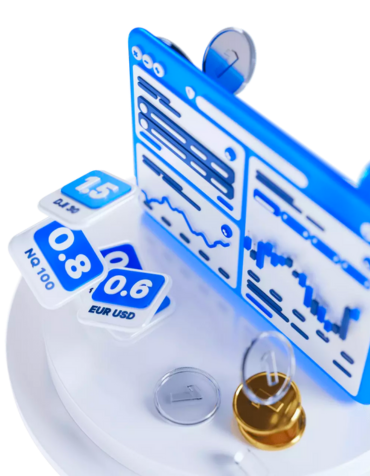We round up the best brokers that we believe offer best value for forex traders.





Trading the USDTRY forex pair involves buying or selling it in the foreign exchange (forex) market. Here are the basic steps to trade USDTRY:
To trade any forex pair, including USDTRY, you'll need to open an account with a reputable forex broker. Ensure that the broker offers access to this specific USDTRY pair.
Deposit funds into your forex trading account. The amount you deposit will determine the size of your trading positions.
Before making any trades, perform a thorough analysis of the USDTRY pair. This analysis typically involves fundamental analysis (economic data, interest rates, geopolitical events) and technical analysis (price charts, indicators) to determine your trading strategy.
Most brokers offer trading platforms that allow you to execute trades. Familiarize yourself with the platform's interface and tools.
Choose whether you want to buy (long) or sell (short) the USDTRY pair based on your analysis. Enter the trade order on your trading platform, specifying the amount (lot size) you wish to trade.
Executes the trade immediately at the current market price.
Sets a specific price at which you want your trade to be executed.
Sets a price at which your trade will be triggered if the market moves in a certain direction.
To manage risk, consider setting stop-loss orders to limit potential losses and take-profit orders to lock in profits at a certain price level.
Once your trade is executed, monitor the USDTRY pair's price movement. Keep an eye on news and events that may impact the exchange rate.
When you achieve your trading objectives, either manually close the trade or wait for your predetermined take-profit or stop-loss levels to be reached.
After closing your trade, assess the outcome. Review your trading strategy and learn from both successful and unsuccessful trades to improve your skills.
Always practice proper risk management. Never risk more than you can afford to lose, and consider using leverage cautiously if available.
For the breakout strategy, you'll want to start by looking for those key support and resistance levels on the USDTRY chart. Once you've identified them, keep an eye out for a significant breakout above a resistance level or below a support level. When that breakout happens, you can enter a long position if the price breaks above resistance or go for a short position if it breaks below support. Just remember to set your stop-loss orders just below the breakout point to manage your risk. And when it comes time to take profit, consider setting targets based on historical price movements or using technical indicators like Fibonacci extensions.
Now let's talk about trend following strategy. To get started with this one, you'll need to determine the prevailing trend by analyzing moving averages or trend lines on different timeframes (like 50-day and 200-day moving averages). If there's an uptrend going on, keep an eye out for buying opportunities when prices retrace towards key support levels or moving average supports. On the other hand, if there's a downtrend happening, look for selling opportunities when prices rally towards key resistance levels or moving average resistances. You can also confirm your trade entries using additional technical indicators like oscillators (such as RSI) or momentum indicators (like MACD). And don't forget about setting your stop-loss orders - place them below support levels in uptrends or above resistance levels in downtrends. Finally, when it's time to take profit, consider setting targets at previous swing highs/lows or use trailing stops to capture those larger moves.
Last but not least is fundamental analysis strategy. Keep yourself updated with economic news releases from both US and Turkish sources that could impact USDTRY exchange rates - things like interest rate decisions from central banks like Federal Reserve and Central Bank of Turkey are important here. Also make sure to monitor any geopolitical events that could affect both countries' economies. And don't forget about analyzing economic indicators such as GDP growth rates, inflation rates, and employment data for signs of strength or weakness in either currency. Once you've done your analysis of these fundamental factors, you can take long or short positions in USDTRY accordingly. And it's always a good idea to combine this strategy with technical analysis to help identify the best entry and exit points for your trades.